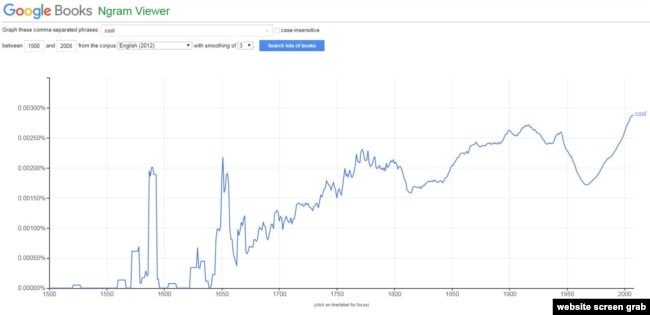In the American film Pulp Fiction, actor Samuel L. Jackson challenges two criminals. They are trying to take money from all of the people in a restaurant.
Jackson plays the part of a former criminal who used to carry out targeted killings. He wants to change his life and does not want to hurt people anymore. But he does not want to give his money to criminals either.
Jackson asks one of the criminals to use an adjective. He asks her to describe Fonzie, a character from the old American television show Happy Days.
“Nobody’s gonna hurt anybody. We’re all gonna be like three little Fonzies here. And what’s Fonzie like? Come on, Yalonda, what’s Fonzie like?
“Cool.”
“What?”
“Cool.”
“Correctamundo! And that is what we are going to be – we’re gonna be cool.”
Today, we will explore the term that Jackson wanted to hear: cool, a word that has both formal and casual uses. The casual, everyday uses of cool will be our topic of discussion.
But first, we begin with a little history.
History
Cool has its roots in the Old English term “col,” meaning “not warm,” notes the Online Etymology Dictionary.
Google Ngram has evidence of cool being used as far back as the 16th century.

Google Ngram results for 'cool'
In other words, cool has a long history. The writer William Shakespeare even used the term in many of his plays, including Othello and Much Ado About Nothing.
But cool’s meanings have changed over time.
By the 20th century, among its other meanings, cool eventually came to suggest a kind of effortlessness.
Fonzie, the character you heard about at the beginning of this report, gives you one example of the idea. He does humorous, wonderful things without seeming to try very hard.
Yet Fonzie did not invent cool. Some people claim this effortless, stylish way of acting is a product of African-American art.
Joel Dinerstein wrote a book called The Origins of Cool in Postwar America. He says cool came from an artistic movement led primarily by black musicians. Lester Young, a saxophone player, is said to have made the term popular in jazz music circles in the 1930s and 1940s.
“To be cool,” Dinerstein noted, “meant you carried personal authority through a stylish mask of stoicism.” In other words, cool meant you endured hardship, but did not express it outwardly.
Modern uses – adjective and adverb
Over time, cool lost its connection with artistic movements and became more common in everyday speech. It still carries many meanings – as a verb, noun, adjective and adverb.
However, in casual situations, Americans often use cool as an adjective or as an adverb.
Adjective
As an adjective, cool generally has three meanings. It can describe something as appealing in a way that people like – especially young people. For example, Americans often say things like “cool sunglasses” or “cool clothes.”
Cool can show approval in a very general way. Imagine you introduce one of your friends to your father. After the meeting, your friend might say,
“Your dad is so cool.”
Cool also can show acceptance, agreement, or understanding.
Consider this situation. You are running late to a meeting with a friend. You send a text message to apologize for your delay. Your friend might respond with the following message:
“That's cool – no worries.”
The Amazon television show Patriot used cool in this way. The main character, a spy named John Lakeman, often gets terrible news. He shows acceptance by saying “cool.”
"Cool... that’s cool."
Adverb
As an adverb, cool generally means in a calm manner. Two of the most common uses might be in the terms “act cool” and “play it cool.”
Imagine two children were playing around and accidentally broke something. Perhaps they broke a lamp or a dish in the house. Then, they hear one of their parents opening the door of their house. One child might say to the other:
“When dad walks in, just act cool – don’t say anything!”
or
“When mom comes in, we have to play it cool, or she will start to suspect something!”
A word of caution
Finally, a word of warning.
Americans generally describe other people with the adjective cool. They do not use it to describe themselves.
This is where culture and grammar meet. An American would consider a statement such as “I am cool” to be strange - even if it is grammatically correct.
So, when speaking with friends, feel free to use the term cool. Although informal, it has a good, positive meaning.
But you should think of cool as a gift you can give to others. If you give that gift to yourself, well, that’s just not cool.
Words in This Story
challenge – v. to invite someone to take part in a competition; to compete against an opponent
character – n. a person in a play, movie or television show
formal – adj. done in an official way; relating to an important or ceremonial event
casual – adj. unofficial; done without much thought
topic – n. subject
etymology – n. an explanation of where a word came from : the history of a word
stoicism – n. the quality or behavior of a person who accepts what happens without protesting or showing emotion
introduce – v. to bring into use or operation; to make someone known to another person
grammar – n. the system and structure of a language
dad – n. someone’s father
We want to hear from you. Write to us in the Comments Section.